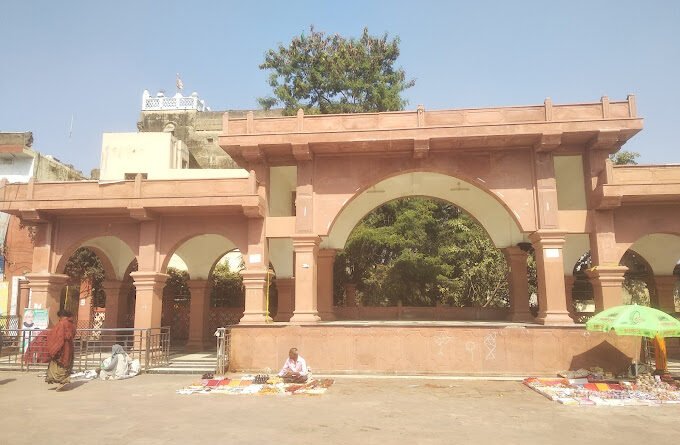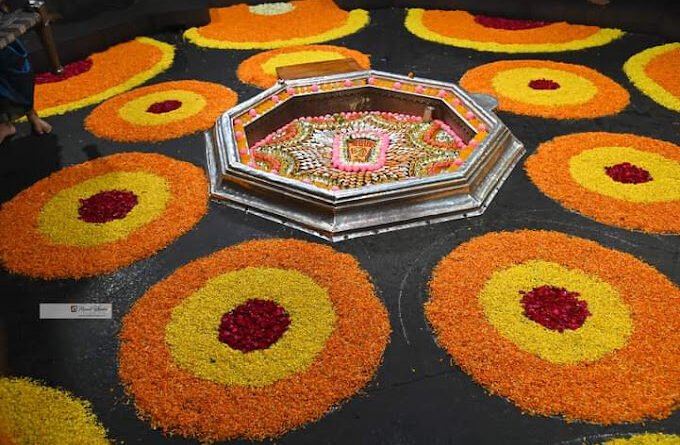Shri Vishnupad Temple Gaya,Bihar
Vishnupad Temple (IAST: Vishnupad Mandir; literally ’temple of the feet of Vishnu’) is an ancient Hindu temple dedicated to Lord Vishnu located on the banks of the Falgu River in Gaya, Bihar, India. The temple is believed to be built at the spot where Vishnu allegedly killed the demon Gayasura or buried him underground. The temple has a footprint of 40 cm,It is believed to be a sculpture of Lord Vishnu in a block of basalt, known as Dharamshila, which was retained when the deity buried Gayasura underground.
Hua habasalt, known as Dharamshila, which was left intact when the deity stepped on the chest of Gayasura before taking him underground.
Brahma Kalpit Brahmins, also known as Gayawal Brahmins or Gayawal Tirtha Purohit or Pandas of Gaya, are the traditional priests of the temple since ancient times. Famous saints Madhvacharya, Chaitanya Mahaprabhu, Vallabhacharya have visited this temple.
legend
Once a demon named Gayasur performed severe penance and asked for a boon that whoever sees him should get salvation. Since salvation is achieved by being religious during one’s lifetime, people started achieving it easily. To prevent immoral people from attaining salvation, Lord Vishnu asked Gayasura to go beneath the earth and did so by placing his right foot on the asura’s head.After pushing Gayasur below the surface of the earth, the footprints of Lord Vishnu remained on the surface which we see even today. The footprint consists of nine different symbols including Shankam, Chakram and Gadham. It is believed that these are the weapons of God. Gayasur now fell on the ground and started begging for food. Lord Vishnu gave him a boon that every day someone would offer him food.Whoever does this, his soul will reach heaven. It is believed that the day Gayasur does not get food, he will come out. Every day, someone from different parts of India will pray for the well-being of their departed and feed food to Gayasur.
History and location
The date of construction of the temple is unknown and it is believed that Rama visited this place with Sita. The present structure was rebuilt by the ruler of Indore, Devi Ahilya Bai Holkar, in 1787 on the banks of the Falgu River. Ahilyabai Holkar had built the temple, he sent his officials to inspect and find the best stone for the temple throughout the region, and eventually he found the black stone of Munger in Jayanagar as the best option. Since there was no proper road and the mountains were far away from Gaya, the officials found another mountain where they could easily carve the stone and bring it to Gaya. The place was near Bathani (a small village in Gaya district). Officials brought artisans from Rajasthan. He started building the temple at Patharkatti (a village and a tourist spot in Bihar). The last temple was built near the Vishnupad temple site at Gaya. After the construction of the temple was completed, many craftsmen returned to their native places, but some of them settled in Patharkatti village itself. The Government of Bihar has marked this place as one of the major tourist destinations of Bihar. 1000 stone steps leading to the top of Brahmajuni hill, south-west of the Vishnupad temple, provide a view of Gaya city and the Vishnupad temple, which is a tourist destination. There are many small temples also near this temple.














